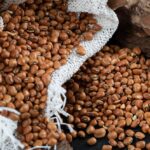Rice cultivation in South Africa holds significant potential for meeting domestic demand, reducing reliance on imports, and supporting agricultural development in the region. To maximize the quality and yield of rice crops, farmers and researchers are exploring innovative techniques and strategies tailored to South Africa’s unique growing conditions. From improved irrigation practices to optimized fertilization methods, here are several techniques for enhancing quality and yield in South African rice production:
1. Selecting Suitable Varieties:
Choosing rice varieties that are well-suited to South Africa’s climate, soil types, and water availability is crucial for achieving optimal yield and quality. Farmers should select varieties with characteristics such as disease resistance, drought tolerance, and high yield potential to ensure successful cultivation under local conditions.
2. Implementing Efficient Irrigation Systems:
Effective irrigation management is essential for maximizing rice yield and conserving water resources. Techniques such as drip irrigation, furrow irrigation, and controlled flooding can help ensure that rice crops receive the right amount of water at the right time, minimizing water wastage and optimizing yield potential.
3. Practicing Integrated Pest Management (IPM):
Pests and diseases can significantly impact rice yield and quality if left unmanaged. Implementing integrated pest management (IPM) strategies, including biological control, crop rotation, and resistant varieties, can help minimize pest pressure while reducing reliance on chemical pesticides. Regular monitoring and early intervention are key to preventing pest outbreaks and minimizing yield losses.
4. Optimizing Nutrient Management:
Proper nutrient management is essential for supporting healthy rice growth and maximizing yield potential. Soil testing and nutrient analysis can help farmers determine the specific nutrient requirements of their rice crops and tailor fertilization programs accordingly. Techniques such as precision fertilization, foliar feeding, and organic amendments can help optimize nutrient uptake and promote vigorous rice growth.
5. Enhancing Weed Control Strategies:
Weeds compete with rice plants for nutrients, water, and sunlight, reducing yield and quality if left uncontrolled. Implementing effective weed control strategies, such as mechanical cultivation, herbicide application, and mulching, can help suppress weed growth and minimize yield losses. Integrated weed management approaches that combine multiple control methods can help reduce herbicide reliance and mitigate weed resistance.
6. Managing Rice Diseases and Disorders:
Diseases and disorders can pose significant challenges to rice production in South Africa. Implementing disease-resistant varieties, practicing crop rotation, and maintaining proper field hygiene can help minimize the incidence and severity of rice diseases. Early detection, proper diagnosis, and timely intervention are essential for effectively managing diseases and preserving yield and quality.
7. Employing Post-Harvest Handling Techniques:
Proper post-harvest handling techniques are essential for preserving rice quality and minimizing losses during storage and transportation. Techniques such as timely harvesting, drying to appropriate moisture levels, and proper storage conditions can help prevent mold growth, insect infestation, and grain deterioration, ensuring that harvested rice maintains its quality and market value.
By implementing these techniques for enhancing quality and yield, rice producers in South Africa can unlock the full potential of their crops and contribute to food security, economic development, and environmental sustainability in the region. Through a combination of sound agronomic practices, innovative technologies, and continuous research and adaptation, South Africa can strengthen its position as a competitive player in the global rice market while meeting the nutritional needs of its population and supporting rural livelihoods.







